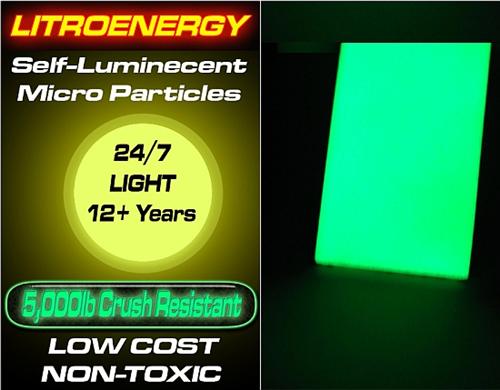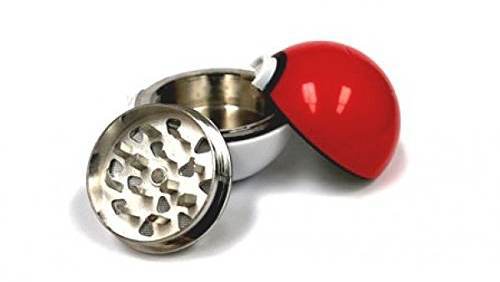
By Evan Ackerman
What happens if you stuff some tritium inside a phosphor-coated microsphere? According to a company called MPK, you get a substance that will glow continuously for over 12 years (half-life) without requiring any energy input. The tech is called betavoltaics, and unsurprisingly, it uses a radioactive gas (the aforementioned tritium) as a power source. But before you go running for your lead underpants (or one of these), you can be somewhat comforted by the fact that tritium radiation (beta particles) can be safely contained by the microspheres it lives inside. The Litrosphere™ materials (which can be in the form of paint or injection-molded plastics) are not affected by heat or cold, can emit just about any color (except white, I’m guessing), and can cover a standard sheet of paper for 35 cents.
The inevitable downside (besides the radioactivity, I mean) after the jump.
However, the general consensus seems to be that this technology will not get very far when it comes to replacing traditional lighting. According to some guy with a Ph.D., “The intensity is not very strong. This is good enough for night illumination of rifle scopes, watches, and emergency signs but it is not going to come anywhere close to matching the light output of or replace electric light bulbs (incandescent, flourescent, LED, etc.) or kerosene lanterns.” That said, there’s a big difference between no light and some light, and if it’s cheap and requires no maintenance, why not put it all over the place? The thing to keep in mind, of course, is that you cannot physically turn the light off. And if you’re like me, leaving things lit all the time will drive you nuts. Even if it’s free.

.jpg)




How about mounting this above toilets so we don’t have to wiz by ecco-location in the middle of the night?
These aren’t betavoltaics at all – betavoltaics are systems which capture the beta particles (read: electrons) from decaying nuclei to produce an electric current, hence the “voltaics” part in betavoltaics. In the case of these items and all other self-contained, tritium-driven glow materials, the radiation from the tritium simply excites a luminescent phosphor coating, causing it to glow.